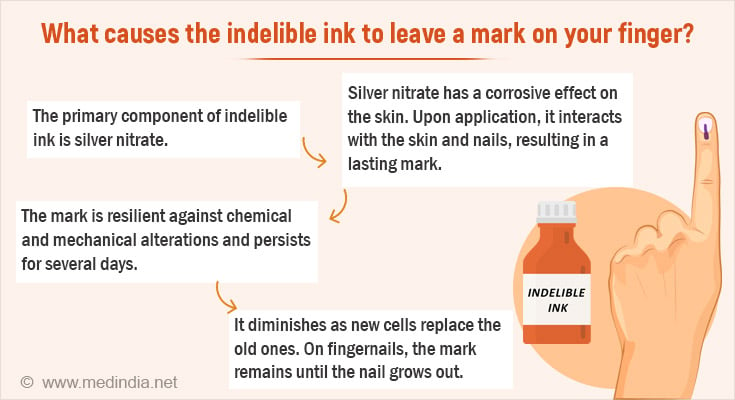- Skin burns from indelible ink application during election duty documented for the first time
- Lack of awareness among election officers about potential health risks underscores need for improved training
- Preventive measures, such as longer applicators and protective gloves, recommended to mitigate risks
In Indian democracy, the indelible ink mark stands as a symbol of civic duty and participation. However, a recent medical case sheds light on an unexpected consequence of this electoral tradition: partial thickness burns over the fingers of election duty officers (1✔ ✔Trusted Source
Indelible voters’ ink causing partial thickness burn over the fingers
).
The Unseen Danger: Skin Burns from Electoral Duties
The case, documented by Sanjay Kumar Mishra and colleagues, describes a 30-year-old male who presented with pain, swelling, and burning sensation, along with black staining of his fingertips, following his role as a polling officer during an election. His task? Applying the indelible voter’s ink to citizens exercising their voting rights. Little did he know, this seemingly innocuous duty would lead to days of discomfort and medical attention.
Indelible ink dries within 40 seconds. Alongside silver nitrate, this water-based ink also contains dyes and a solvent such as alcohol, facilitating rapid drying.’
The culprit? The very ink designed to safeguard the sanctity of the electoral process. Composed of silver nitrate, undisclosed chemicals, dyes, and aromatic materials, this seemingly benign substance can, under certain circumstances, trigger skin reactions, including burns. Mishra’s report highlights how repeated contact with the ink, coupled with its potential concentration increase due to alcohol evaporation, can lead to adverse dermatological effects, ranging from irritation to partial thickness burns.
What’s particularly concerning is the lack of awareness among election duty officers regarding these potential hazards. Mishra notes that their patient had not been briefed on the risk of chemical burns during pre-election training, leaving him vulnerable to unintended exposure. This oversight underscores the need for comprehensive training programs that educate election personnel on potential health risks associated with their duties.
Preventive Measures to Avoid Chemical burns
To mitigate such incidents in the future, Mishra proposes several preventive measures. First and foremost, election authorities should incorporate awareness of chemical burn risks into their training curriculum, ensuring that officers are equipped to handle indelible ink safely. Additionally, practical precautions, such as providing longer applicators to minimize inadvertent skin contact and encouraging the use of protective gloves, can further reduce the likelihood of skin-related complications.
While the case documented by Mishra and colleagues may be the first of its kind, it serves as a sobering reminder of the unforeseen hazards that lurk within everyday tasks. As India gears up for future elections, let us not only celebrate the vibrancy of democracy but also prioritize the health and well-being of those entrusted with safeguarding its integrity. Through proactive measures and heightened awareness, we can ensure that the indelible mark of democracy leaves a positive legacy, untainted by the scars of unintended harm.
Reference:
- Indelible voters’ ink causing partial thickness burn over the fingers – (https://www.ncbi.nlm.nih.gov/pmc/articles/PMC4292141/)
Source-Medindia



